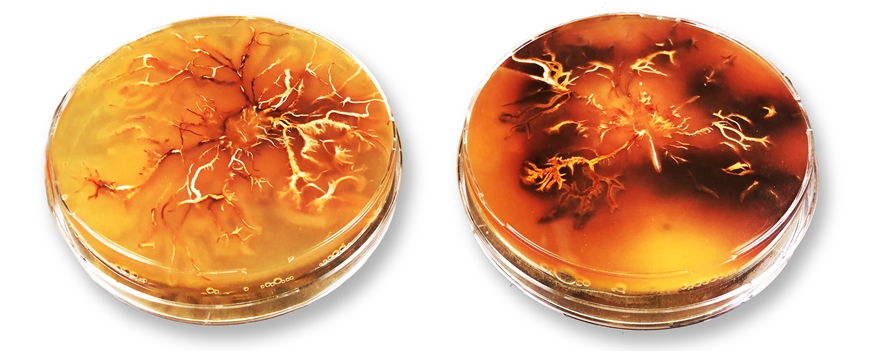Researchers at the Swiss Federal Laboratories for Materials Science and Technology (Empa) have discovered that a fungus can be used to create large amounts of the black pigment melanin. According to a press release, costly, complex processes and attempts to extract melanin from microorganisms have only achieved low yields to date, which is why this substance is four times more expensive than gold.
Empa researcher Francis Schwarze from the Cellulose & Wood Materials department in Dübendorf is quoted in the press release: “We have selected a promising strain of A. cepistipes, that allows us to produce around 1,000 times more melanin than with other fungi.”

Javier Ribera, a major contributor to this process, explains that this system now enables sustainable production that no longer requires complex extraction stages. He says that they chose Armillaria cepistipes, which is actually viewed as a pest in forests, because its “ amazing metabolism” binds heavy metals and produces melanin “on a massive scale”. Using this, for example, the team created melanin-based composite membranes to clean polluted water.
Formation of "amazing metabolism" heavy metals
In addition, a historic instrument is benefiting from melanin’s ability to bind to harmful substances: the serpentino (Latin for “little snake”). Stephan Berger from SBerger Serpents in Le Bois in Jura, Switzerland explains: “The Serpentino was used over 400 years ago and was the godfather of modern instruments such as the saxophone and the tuba.” However, original instruments have become scarce as the moist microclimate created by breath destroys the interior of this sinuous wooden instrument.
Using melanin, Berger’s newly founded company will recreate the instruments, which are also used in jazz music today as seen in this video, together with the University of Applied Sciences and Arts Northwestern Switzerland and the Basel Historical Museum. The pigment will be used in an innovative wood preservative to help to protect the inside of this instrument from degradation.
Related news
Contact us
Can we put you in touch with a peer company or research institute? Do you need any information regarding your strategic expansion to Switzerland's technology and business center?
info@greaterzuricharea.com